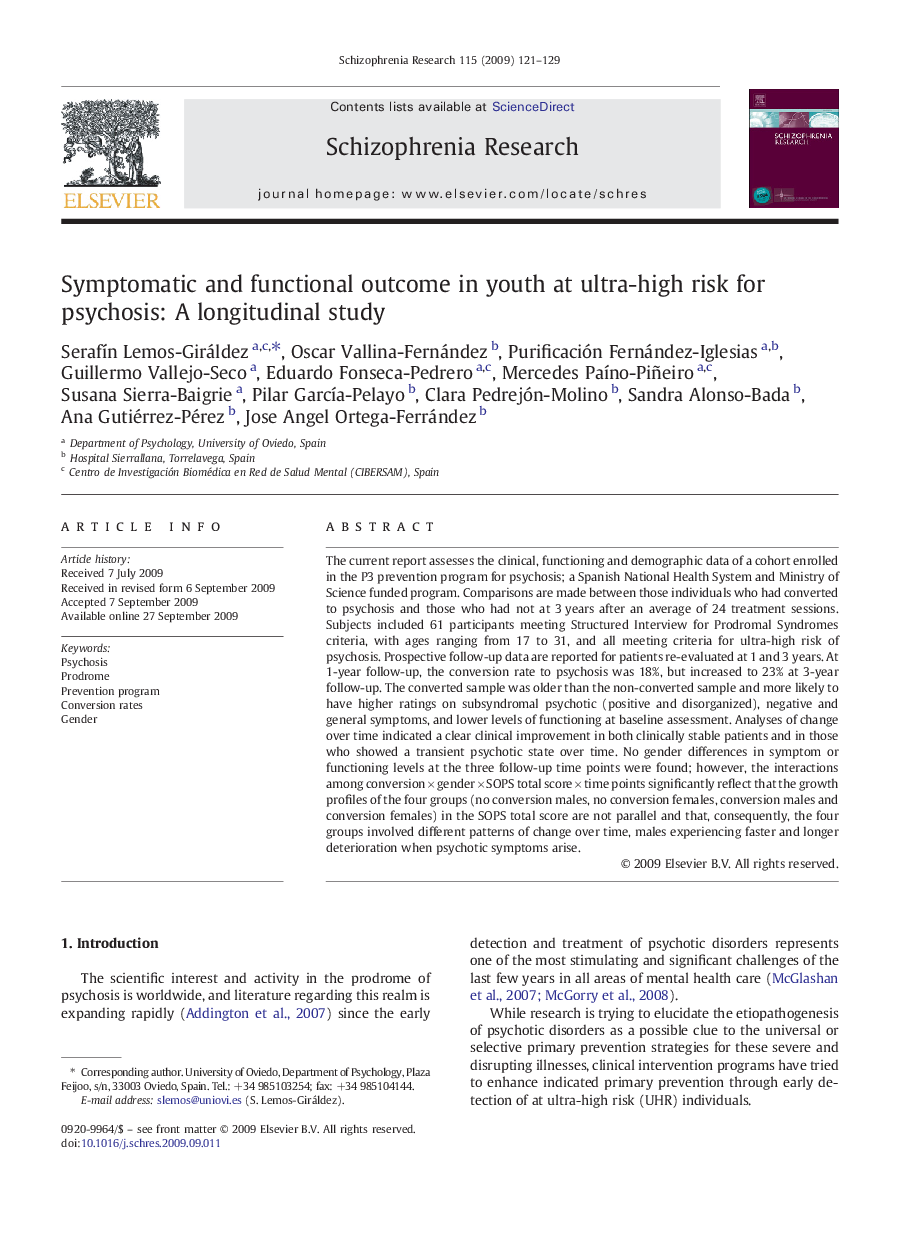| Article ID | Journal | Published Year | Pages | File Type |
|---|---|---|---|---|
| 6828410 | Schizophrenia Research | 2009 | 9 Pages |
Abstract
The current report assesses the clinical, functioning and demographic data of a cohort enrolled in the P3 prevention program for psychosis; a Spanish National Health System and Ministry of Science funded program. Comparisons are made between those individuals who had converted to psychosis and those who had not at 3 years after an average of 24 treatment sessions. Subjects included 61 participants meeting Structured Interview for Prodromal Syndromes criteria, with ages ranging from 17 to 31, and all meeting criteria for ultra-high risk of psychosis. Prospective follow-up data are reported for patients re-evaluated at 1 and 3 years. At 1-year follow-up, the conversion rate to psychosis was 18%, but increased to 23% at 3-year follow-up. The converted sample was older than the non-converted sample and more likely to have higher ratings on subsyndromal psychotic (positive and disorganized), negative and general symptoms, and lower levels of functioning at baseline assessment. Analyses of change over time indicated a clear clinical improvement in both clinically stable patients and in those who showed a transient psychotic state over time. No gender differences in symptom or functioning levels at the three follow-up time points were found; however, the interactions among conversion Ã gender Ã SOPS total score Ã time points significantly reflect that the growth profiles of the four groups (no conversion males, no conversion females, conversion males and conversion females) in the SOPS total score are not parallel and that, consequently, the four groups involved different patterns of change over time, males experiencing faster and longer deterioration when psychotic symptoms arise.
Related Topics
Life Sciences
Neuroscience
Behavioral Neuroscience
Authors
SerafÃn Lemos-Giráldez, Oscar Vallina-Fernández, Purificación Fernández-Iglesias, Guillermo Vallejo-Seco, Eduardo Fonseca-Pedrero, Mercedes PaÃno-Piñeiro, Susana Sierra-Baigrie, Pilar GarcÃa-Pelayo, Clara Pedrejón-Molino, Sandra Alonso-Bada,
